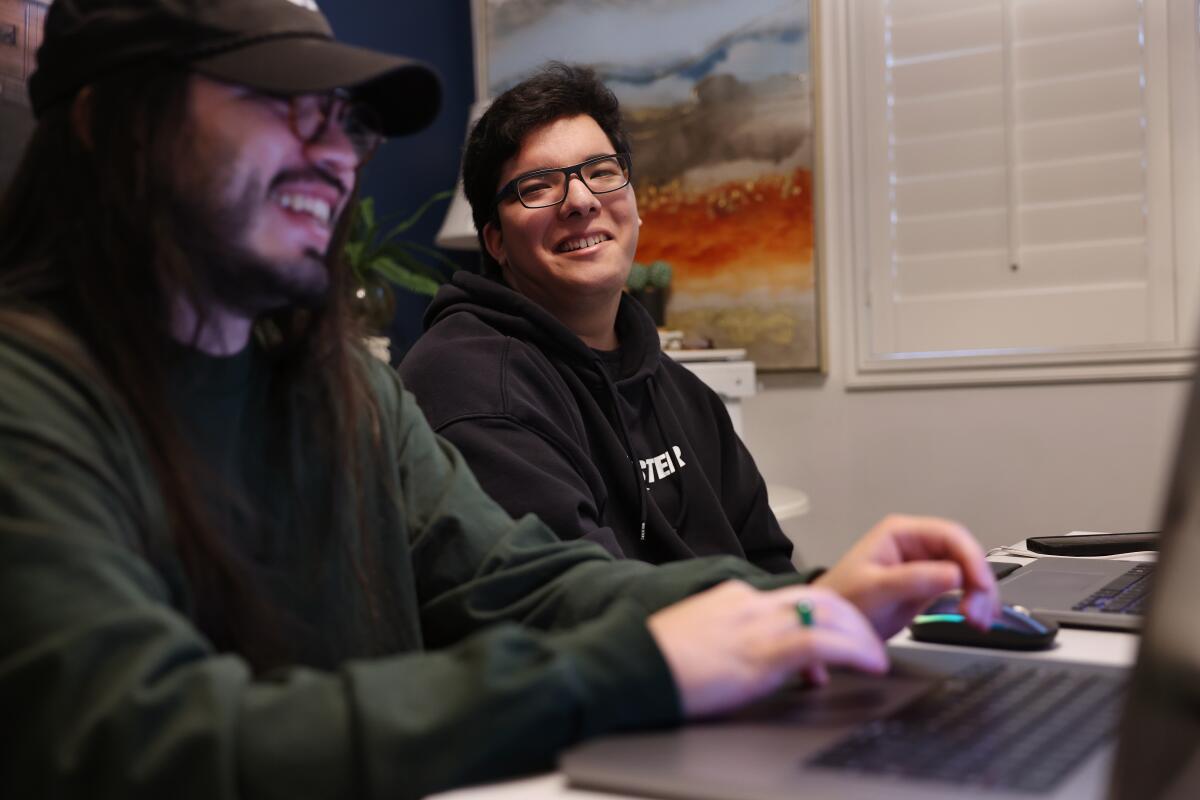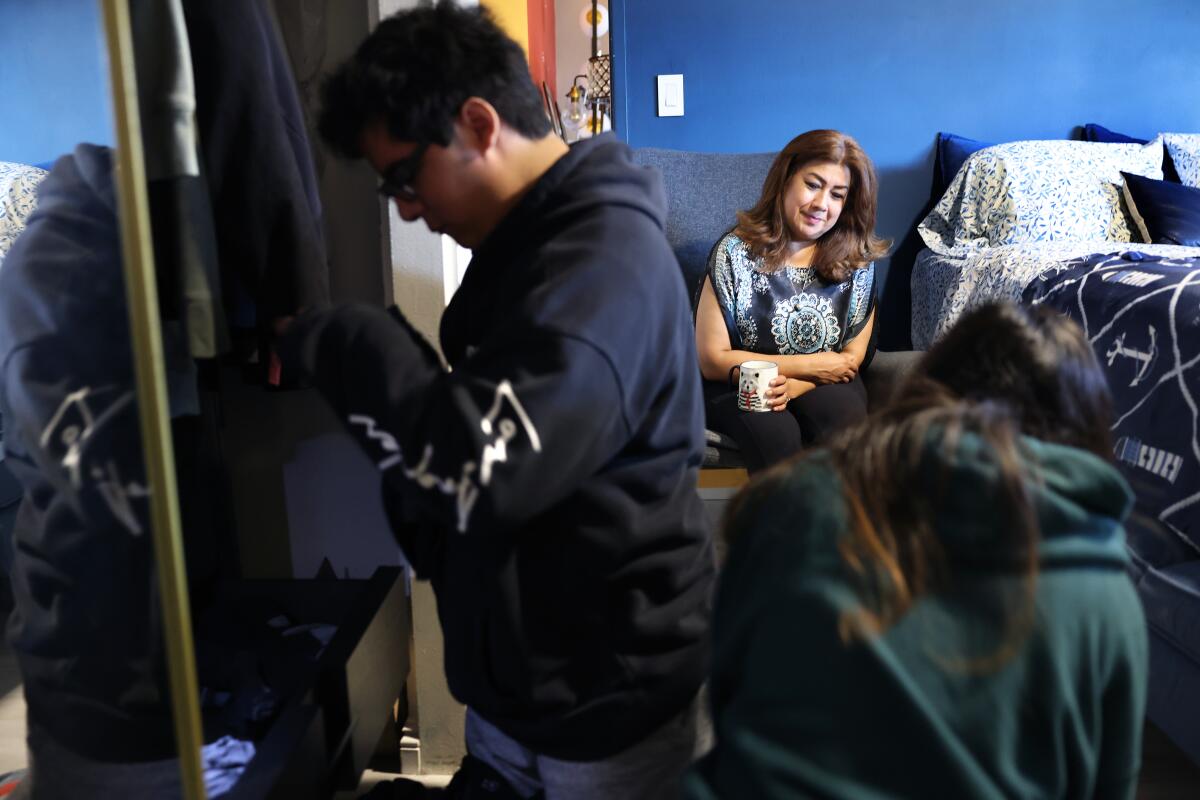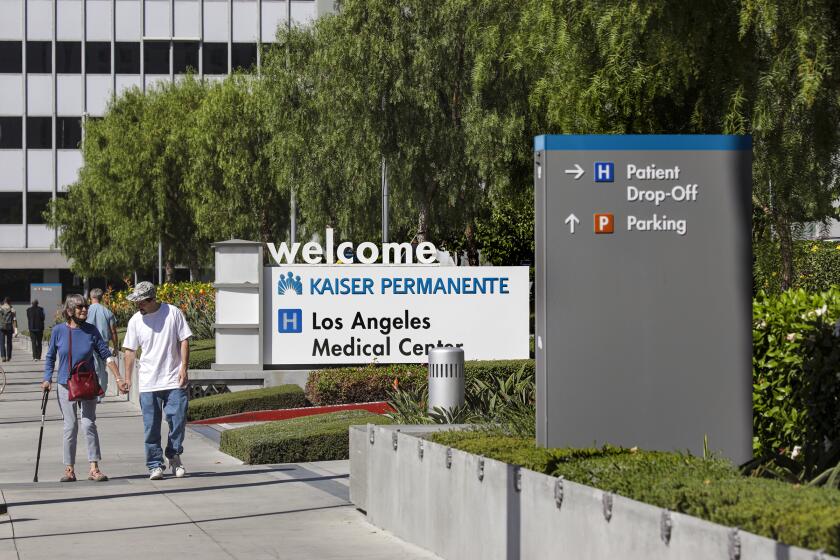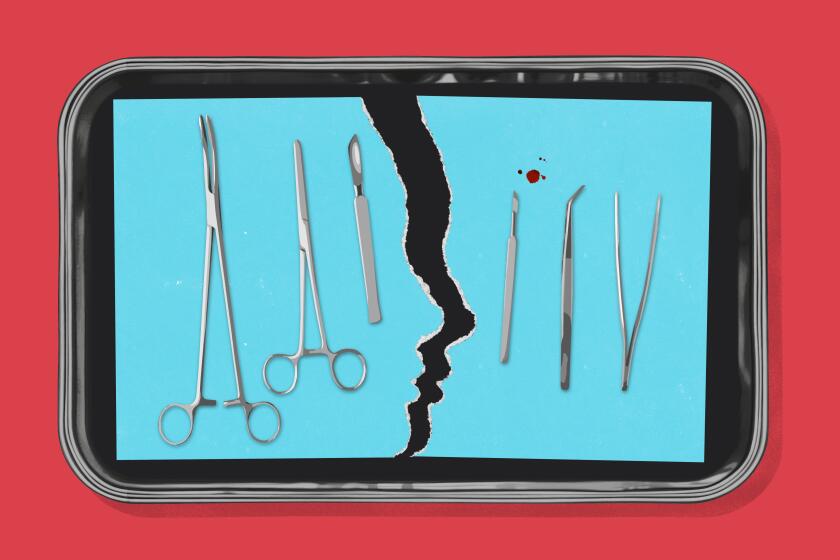People with disabilities love this program. Why are Latinos underrepresented?

It was a yearlong battle, Maribel Ahumada said, to get her teenage son into the program that changed his life.
The Gardena mother was dissatisfied with the traditional system that arranges supportive services for Californians with developmental disabilities like D’Angelo Ahumada, who has cerebral palsy, epilepsy and other conditions. It has long been plagued by inequities, including lower spending on Latinos.
“Before, everybody chooses for him: ‘This is what we have. This is what you get. That’s it. Take it or leave it,’” Maribel Ahumada said. “Now he gets to decide.”
The Self-Determination Program is an alternative option for people with developmental disabilities who get services through regional centers, a system of nonprofits that contract with the state. It gives disabled people and their families more control over how their budget for supportive services is spent. It allows Californians to choose and hire companies or individuals that are not already vendors with the regional centers — and to pay them higher rates to better retain workers.
Eighteen-year-old D’Angelo Ahumada wants to build up an audience as an online influencer, because “you get to do your own thing,” he said. “It’s freedom, I guess.”
So the family hired a school mentor he clicked with as a technology coach. He wants to pursue voice acting, so he has a personal assistant who helps him visit colleges and scope out their programs.
And if he feels like stopping by the mall, meeting a friend, or going to the movies — the kind of freedom readily enjoyed by his triplet brother and sister — having an assistant means he no longer has to wait on his mother.
“He feels now that he matters,” Maribel Ahumada said. “That his wants and wishes matter.”

The California bill that launched the program, SB 468, said it would also help people from “traditionally underserved” communities get what they needed.
But nearly three years after the program became widely available, Latinos like Ahumada are underrepresented, making up just 20% of those participating as of December. That is less than half of the 41% they make up among eligible Californians getting services through the Department of Developmental Services. Black people are also underrepresented, as are people who primarily speak Spanish.
And being in the program at all remains a rarity for Californians with disabilities: Only about 1% of eligible people are enrolled.
“It’s not that people don’t want it or aren’t interested in it,” said Vivian Haun, a senior policy attorney with Disability Rights California. “It’s a testament to how poorly it’s been implemented and how high the barriers to entry have been.”
Disabled people and their families laud the program, but complain that getting in can be “time consuming, labor-intensive, and demanding,” a report from the UCLA Tarjan Center, the California State Council on Developmental Disabilities and other groups found.
One family member told researchers they had reduced their work hours to handle the program but still struggled with it. Some also complained that regional center staff knew little about the program or discouraged them from pursuing it, with hurdles differing from center to center.
Amy Westling, executive director of the Assn. of Regional Center Agencies, said regional center staff are committed to the program, but are also tasked with following government rules — and that much of the bureaucracy that has bogged down the program is tied to requirements for federal funding.
The “ancient technology” at regional centers doesn’t help, she said. Then there are state rules surrounding budgeting. “You end up with this very clunky process,” Westling said, “that is intended to increase freedom.”
Months after Kaiser Permanente reached a sweeping agreement with state regulators to improve its mental health services, the healthcare giant is facing union allegations that patients could be improperly losing such care.
In Pasadena, Allison Fuller said she had been trying to get her 6-year-old daughter into the program for seven months. It’s “an exercise in your tolerance for frustration,” said Fuller, who is Latina and works as a consultant.
Fuller has flexible hours because she owns her own business. She sits on a regional center committee and knows the system. Even with those advantages, she has wondered if she should give up.
How much more difficult is it, Fuller wondered aloud, “if you have a second job or your first language isn’t English, or God forbid, if you don’t know what you’re entitled to?”
People participating in the program are required to undergo an orientation before starting. They must choose a “financial management services” provider that helps manage their budget and track expenditures. Some told The Times they had struggled to find a financial provider willing to take them.
Among people who gave up on pursuing the program, 29% said it was “too much work,” a state survey released in 2020 found. At a recent training by a state agency, families were told to expect the planning and enrollment process to take about eight months.

Many families choose an “independent facilitator” to assist them, whom they pay out of their program budget. Haun, whose brother is in the Self-Determination Program, said that even for her — an attorney who trains people on the program — “I could not make it work without the help of my independent facilitator.”
But finding one can be especially challenging for people who need someone fluent in another language, advocates said. The UCLA report concluded that “the current complexity of the system disadvantages people of color, who could potentially benefit immensely.”
Some parents seem “terrified of it,” said Aida Amare, founder and president of Hope for Special Education, which helps serve the Ethiopian American community. “They have it in their mind that it is just too hard to find service providers.” But Amare argued that parents should not be intimidated out of pursuing it.
“No one has told them, ‘This is what you have been doing all your life’” as a parent, Amare said.
Getting into the program is “worth the effort,” Paramount resident Daysi Funes said in Spanish. Her 17-year-old daughter Dayra, who has Down syndrome and autism, was among the first in the state to enter the fledgling program. Funes has been amazed by her progress with the help of a personal assistant.
“It’s a marvelous program,” Funes said. “I want my daughter to stay in it.”
“The problem is the process.”
Californians typically end up getting more spent on supportive services after they get into the new program: State data from the fall show that before people entered the program, their median level of annual spending was roughly $19,000, which rose to over $38,000 after enrolling.
That was slightly higher than the median amount they had been approved for in the traditional system — roughly $34,000 — but were not necessarily getting. Aaron Carruthers, executive director of the California State Council on Developmental Disabilities, said he sees those numbers as evidence of “people who were underserved finally getting what they needed.”
In California, doctors trained as pediatricians, OB-GYNs and other specialties can take on lucrative — and potentially risky — cosmetic surgeries. Some have branched out with little or no surgical training.
For instance, Naomi Hagel, an independent facilitator and former regional center manager, said that in the traditional system, someone might have gotten approval for respite — caregiving hours to relieve their family members — “but you can’t access it because you can’t find anybody to work for minimum wage.”
Hagel gave the example of a 10-year-old client who is nourished through a stomach tube. “None of the respite agencies wanted to touch him” for liability reasons, which meant he wasn’t getting that care, she said.
Under the new program, Hagel said, the family could advertise for caregivers willing to meet his specific needs. The program also allows them to pay more “because you cut out the middleman of the agencies.”
Budgets are initially drawn up based on cost of the services that someone was getting before, but can also be adjusted if it is shown that the person has previously unmet or emerging needs.
Some Californians begin that budgeting process at a disadvantage because less was spent on their services in the past. Spending in the traditional system has long been dogged by racial and ethnic disparities.
“I can’t tell you how many times I start a budget and it says ‘zero’” for services previously paid for through the regional center, said independent facilitator Mellissa De Conza. In the Self-Determination Program, she said, those same families can end up receiving valuable services such as art classes or a personal assistant.
But to secure such a budget increase, families and their advocates have to make their case for the need. Regional centers face federal requirements for assuring “financial accountability,” including documenting the reasons for a budget increase, the developmental services department said.
Elizabeth Gomez, cofounder and executive director of the advocacy and support organization Integrated Community Collaborative, said that Latino families who received scant services in the past have had to slog through a slow process of “assessments to determine what you should have been receiving all along.”
That can take months, Gomez said, because there aren’t enough experts available to come out and evaluate clients and determine what kind of services they need.
Assembly Bill 1963 would sundown the use of the herbicide paraquat, which has been linked to Parkinson’s disease and other health issues, beginning in January 2026.
Maribel Ahumada, who is also a cofounder of Integrated Community Collaborative, said it had taken months to get a company to assess D’Angelo for “adaptive skills” services to help him become more independent, so that they could be included in the budget. That was just part of a tedious process that took roughly a year, she said.
“The regional center was trying to control every single little thing,” she said.
Westling said that even if people are starting from a low number, the process of hammering out a budget can result in “greater opportunity and greater equity than in the traditional program.”
“But is it an easy process to navigate when you have a lot of other things going on in your life? It’s not.”
Besides such barriers, Latinos served by the regional centers tend to be younger, and younger people have been slightly less likely to enter the program compared with adults, Westling said.
Parents and advocates trying to navigate regional centers have complained that those with time and resources to put up a fight are more likely to get needed services, whether in the traditional system or the new program.
“Even though the services are technically free ... oftentimes the parents that are able to access the services have spent considerable dollars on private advocates and private attorneys,” said Areva Martin, president and chief executive of the Special Needs Network.
“So the system doesn’t work the same for all families. Your education level, your financial resources — all of those things dictate, in many instances, how successful you are going to be.”
In light of such concerns, state Sen. Caroline Menjivar (D-Panorama City) put forward a bill that would “ensure equitable enrollment by race, ethnicity and regional center” in the Self-Determination Program. SB 1281 would also require standardized procedures at regional centers for enrollment, budgeting and other aspects of the program.
“We just need to make sure that everyone has access to this program,” Menjivar said at a state hearing.
The Assn. of Regional Center Agencies said it would back the bill if the wording were changed to “promote” rather than “ensure” equitable enrollment, warning there could otherwise be an unintended result of “freezing enrollment in areas where community members have enrolled at a greater rate.”
Another bill, SB 1463, would create a state position dedicated to overseeing the rollout of the program. The Department of Developmental Services also allocated more than $2 million to regional centers this budget year for efforts to help people better access the Self-Determination Program and to reduce disparities.
‘There are so many things wrong with this app that I don’t even know where to begin,’ one doctor said about Calmara, which says it can identify sexually transmitted infections from photos of penises.
More to Read
Sign up for Essential California
The most important California stories and recommendations in your inbox every morning.
You may occasionally receive promotional content from the Los Angeles Times.















